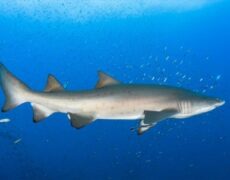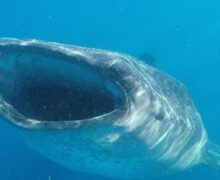Research
Current research is focused on habitat use, movement patterns and migration of sharks and billfish with an emphasis on incorporation of movement ecology for improvement of fisheries management and sustainable use of marine resources. Methodology includes use of acoustic and satellite telemetry to track marine fishes and construction of state space models to generate continuous tracks, characterize behavioral states and to quantify habitat use by these animals. Remote sensing data is used to correlate environmental conditions with areas of high use, with the goal of documenting population-wide characteristics of movements. Both coastal and oceanic species are being studied at locations including New England, mid-Atlantic, Bermuda, Bahamas, Cayman Islands, Panama, Galapagos and Yucatan, Mexico. International collaborations include researchers from Australia, Bermuda, Canada, Ecuador, Great Britain, Mexico, New Zealand and several countries in Africa.
Much of my research in conducted in collaboration with the Guy Harvey Research Institute at Nova Southeastern University in Fort Lauderdale, FL. Most of the animals tracked in our projects can be viewed at GHRItracking.org
 Home
Home Browse
Browse Close
Close Events
Events Maps
Maps Email
Email Brightspace
Brightspace eCampus
eCampus







